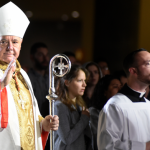After the bugs were worked out, the VickersVirginia established a reputation for ruggedness and reliability.
When one thinks of Great Britain’s heavy bomber aircraft that preceded the Jet Age, chances are the Avro Lancaster and Handley Paige Halifax of World War II are the first to come to mind, and perhaps the Handley Page Type O/400 of World War I.
But what’s practically forgotten by all but the most hardcore military aviation buffs is that the Royal Air Force also acquired a top-notch bomber in the interwar years. Accordingly, The National Interest shines the proverbial spotlight on the Vickers Virginia heavy bomber.
Vickers Virginia Initial History and Specifications
The inspiration for this article comes from the Rex’s Hangar channel of MSN, specifically a video posted on or about April 11, 2025, titled “Britain’s Best Interwar Bomber (No, Really!) | Vickers Virginia.” As noted by the text caption accompanying the video:
“Today we’re taking a look at the Vicker’s Virginia, a British Heavy bomber that operated for most of the interwar period. Its life began … poorly, but things improved and it eventually became an excellent machine, contributing much to research and development with the RAF and AAEE [Aeroplane and Armament Experimental Establishment, which existed from 1918 to 1992].”
Built by the now-defunct Vickers Limited as a successor to their Vimy bomber and designed by the company’s chief designer, Reginald Kirshaw “Rex” Pierson, this warbird made its maiden flight on November 24, 1922, and officially entered operational service in 1924. Originally, it was going to be named the Vickers Vulcan, but this moniker was changed to Virginia to meet the company’s then-current trend of naming aircraft after locations.
Tech specs and vital stats of the Virginia were as follows:
- Crew: Four (pilot, navigator, and two gunners)
- Wingspan: 87 ft 8 in
- Max Takeoff Weight: 17,600 lbs.
- Powerplant: Two 468 hp Napier Lion IAZ engines
- Max Airspeed: 108 mph
- Range: 985 miles
- Armament:
A total of 124 Vickers Virginia airframes were assembled.
Operational History and Performance
As indicated by the quoted passage from the Rex’s Hangar video, the Virginia was problematic at first. Among the maladies were heavy rudder and aileron loads combined with inadequate longitudinal stability which made the warbird physically demanding and tiring to fly, particularly in turbulent conditions. The final variant, the Mark X, had all metal construction.
After the bugs were worked out of the system, the Virginia established a reputation for ruggedness and reliability, It ended up living a reasonably lengthy service life, remaining in frontline service until 1938 (the year before WWII began). According to the BAE Systems info page, “Some of the last of the type to remain in service were used by the Parachute Testing Unit at RAF Henlow, although a number of Vickers Virginia aircraft remained in use on non-operational tasks as late as 1941.”
So, in other words, the plane actually did see service in WWII, but never actually dropped bombs or fired shots in anger.
Where Are They Now?
Sadly, none of these remarkable aircraft were preserved for posterity. All of the all-metal Mark Xs were scrapped by 1942 to provide material for the war effort.
About the Author: Christian D. Orr
Christian D. Orr was previously a Senior Defense Editor for National Security Journal (NSJ) and 19FortyFive. He is a former Air Force Security Forces officer, Federal law enforcement officer, and private military contractor (with assignments worked in Iraq, the United Arab Emirates, Kosovo, Japan, Germany, and the Pentagon). Chris holds a B.A. in International Relations from the University of Southern California (USC) and an M.A. in Intelligence Studies (concentration in Terrorism Studies) from American Military University (AMU). He has also been published in The Daily Torch, The Journal of Intelligence and Cyber Security, and Simple Flying. Last but not least, he is a Companion of the Order of the Naval Order of the United States (NOUS). If you’d like to pick his brain further, you can ofttimes find him at the Old Virginia Tobacco Company (OVTC) lounge in Manassas, Virginia, partaking of fine stogies and good quality human camaraderie.
Images: Wikimedia Commons.
















